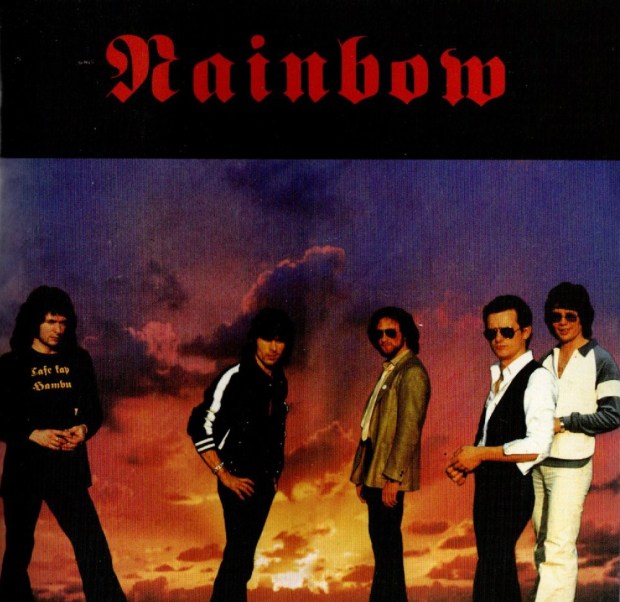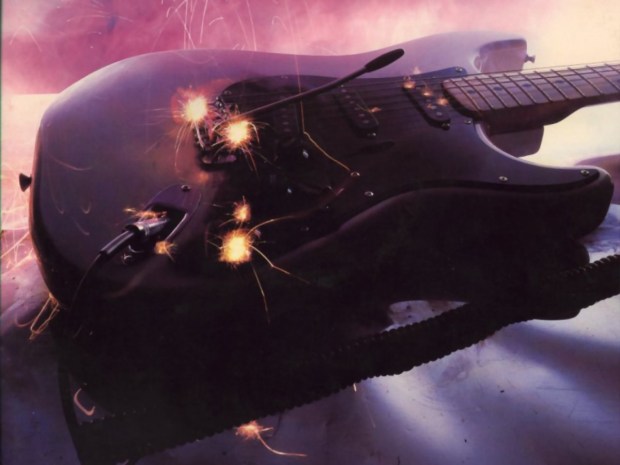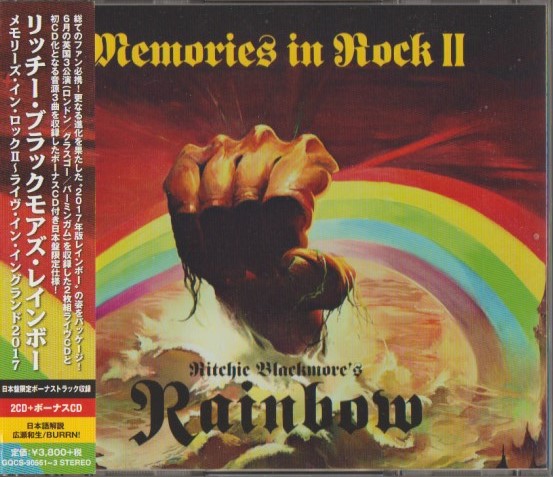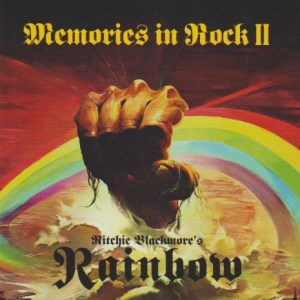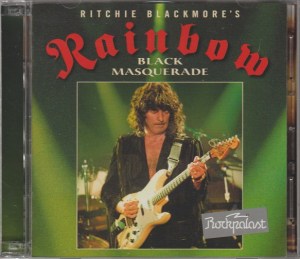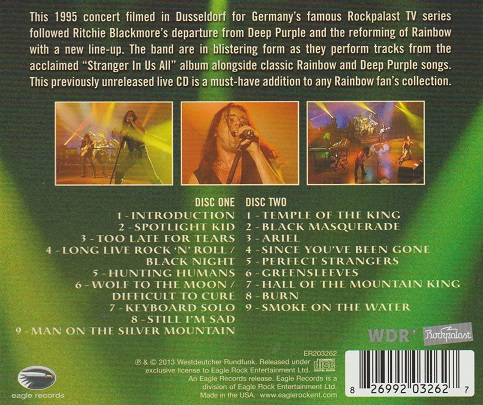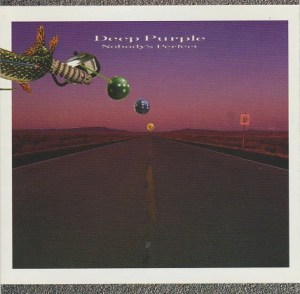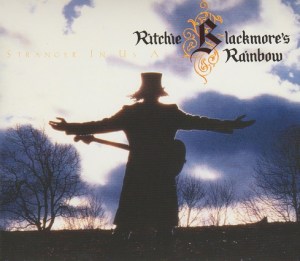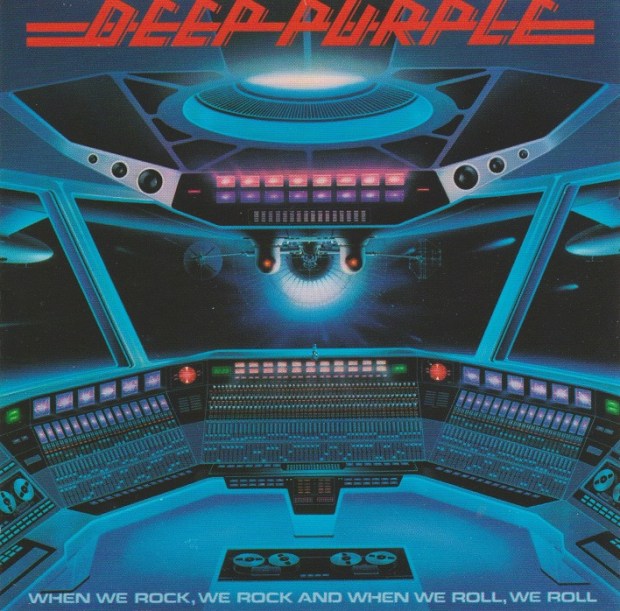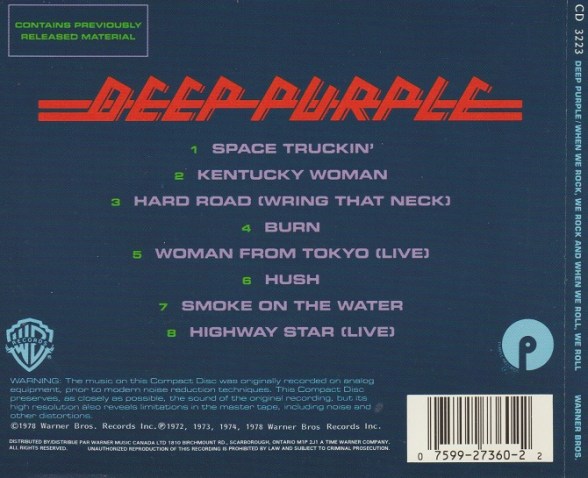 RAINBOW – Down To Earth Tour 1979 (2015 Purple Pyramid box set)
RAINBOW – Down To Earth Tour 1979 (2015 Purple Pyramid box set)
On the surface, this is quite a deluxe box set. It’s larger than than a typical CD case by an inch on either side, and it’s almost an inch deep. It has a beautiful hologram-style finish, shining and shimmery. There are three discs inside, one from each of three shows on the 1979 Rainbow tour: Denver, Long Island, and Chicago. Each CD comes in its own full colour sleeve, and there are other goodies packed inside, such as the obligatory booklet. It’s a loaded booklet, with loads of photos and text.
You might look at the track listing on the back and ask why there are only seven tracks per show (five for Chicago). Rainbow were only an opening act (for Blue Oyster Cult) on this tour, a source of frustration for the band. Also, the track listing is deceiving because “Lost In Hollywood” is a long bomber, over 20 minutes long on each disc, and contains lengthy solos and detours.
There are issues. First and foremost: the audio. It’s not great. None of the discs are particularly outstanding. They’re all different sounding; just a different variety of bad! People who buy bootlegs won’t mind so much, but when you look at a set this deluxe on the store shelves, you might be expecting more sonically. A lot more. That’s just the nature of these kinds of releases. They’re fine to play, but some people will dismiss them.
The other issue with the music would be that the tracks are repeated from show to show. The variety comes from the playing, not the setlist.
Speaking of playing, even though the band were tired of the opening slot, they don’t show it. The lineup was one of Rainbow’s best: Graham Bonnet on lead vocals, Don Airey on keyboards, Deep Purple alumnus Roger Glover on bass, the legendary Cozy Powell on drums, and of course the man in black Ritchie Blackmore on guitar. Everyone knows what to expect from a Blackmore guitar solo, but a Don Airey keyboard solo is less familiar territory. It’s part Doctor Who and part rock and roll. And Cozy, of course, slams. You only wish he were better recorded.
Rainbow were playing loads of new material on this tour, with only a handful of Dio-era classics. “Eyes of the World” is an interesting choice for opener, not an obvious selection. It causes the show to open with an electronic pulse, all atmospheric and sci-fi. It’s a change from the usual hit-em-hard kind of opener. Of course, the song does rock, but the intro is over a minute long. A second new song, the slower blues “Love’s No Friend” follows, another interesting choice. It’s rife with brilliant guitar work from Blackmore, and Airey compliments him perfectly. Continuing with new material, “Since You Been Gone” was the familiar single written by Russ Ballard, which closes with a load of solos from Blackmore and Airey, and the “Over the Rainbow” segment as well. “All Night Long” (which opened the Down to Earth album) works well to regain focus after all that meandering. I like how Graham changes the lyrics. He clearly sings “I need a girl who can give me head, all night long,” instead of “keep her head”! Unsubtle. The fifth and last of the new songs is the aforementioned scorcher “Lost In Hollywood”, bloated to 22 to 26 minutes from show to show. This is the track for the musicians in the audience, and for everyone else to take a pee. Fortunately for those who love great drum solos, Cozy has a spotlight moment. Unfortunately, not everyone loves drum solos.
The set closes with two Dio classics: “Man on the Silver Mountain” (long solo opening, and a bit of “Lazy”), and “Long Live Rock and Roll”. It’s hard for any singer to do Dio and here they sound like a Graham songs. I prefer Graham’s version of “Silver Mountain” to Joe Lynn Turner’s. Really, these are pretty good interpretations, as long as you can forget the mighty elf’s versions for a few moments. Graham had no issue with the range or power, just that he’s a completely different vocalist from Ronnie James Dio.
The Chicago set is missing “Since You’ve Been Gone” and “Silver Mountain”, which were not played that night.
The liner notes are excellent, except when printed in black ink over a blue background, rendering them extremely hard to read. It’s 28 pages with rare photos and ads. The set also includes a heavy metal bottle opener that you’ll never use, a Richie Blackmore guitar pick that you’ll never use, and a Rainbow button & patch that you won’t put on any jacket that you own.
This set is for diehards only; those that need as many Rainbow shows from as many lineups as they can get. For everyone else, it’s pure overkill.
I’m a diehard. This is my score.
3/5 stars
